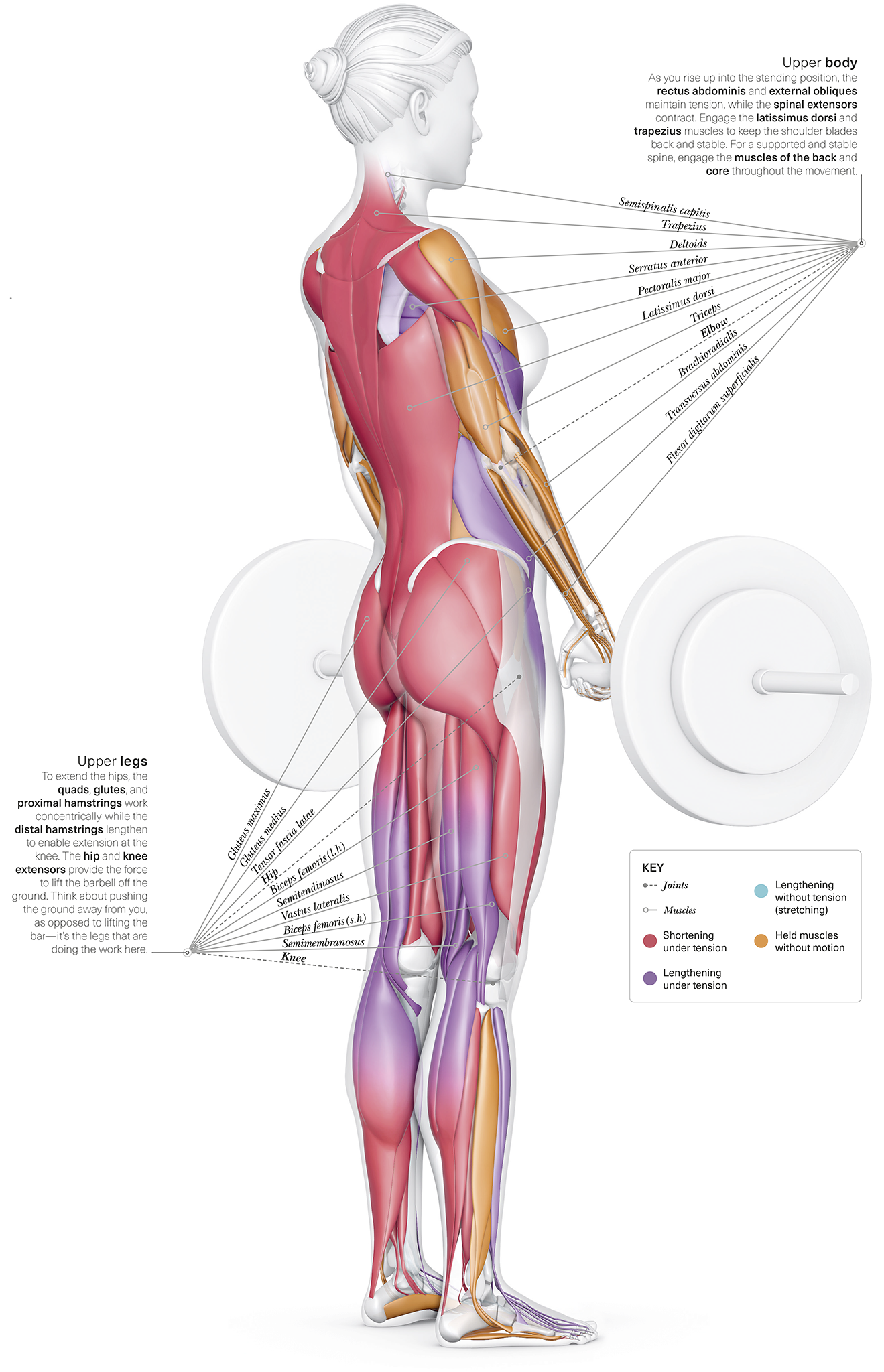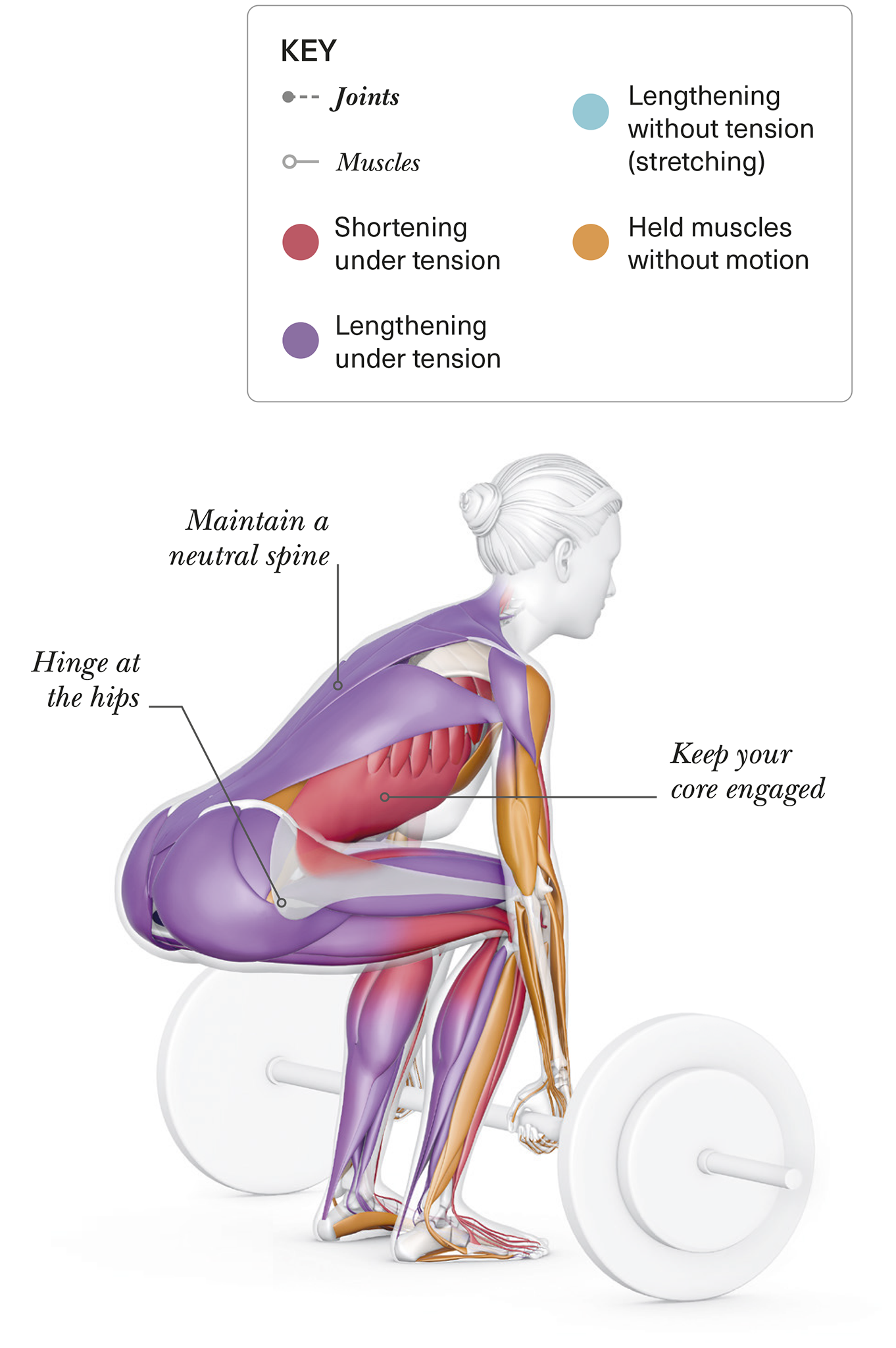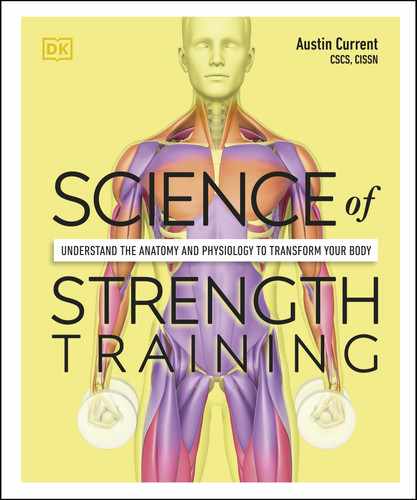traditional deadlift
This exercise helps train most of the muscles in the lower body while also challenging many upper-body muscle groups. Hip extension strengthens the glutes and hamstrings (known as the posterior chain), while knee extension trains the quadriceps. To stay safe, work on the mechanics of the movement before upping the load.
the big picture
You will need a barbell with full-size or bumper plates. Rather than thinking of lifting the bar, allow the upward movement generated by the quads, hamstrings, and glutes to raise the bar by driving down. Be sure to control the return move.
Beginners can start with 4 sets of 8–10 reps; discover other variations of this exercise on and other targeted sets within the training programs.
PREPARATORY STAGE
Stand centrally along the bar with your feet roughly shoulder-width apart and angled slightly outward. Push your hips back and bend your knees as you reach for the bar; your shins will be close to the bar. Keep a neutral spine, with your shoulders back and your upper-back muscles engaged.

n Double-tap image to read the labels
stage one
Breathe in and brace your upper body and core. Drive through the floor with your quads and power your hips forward as you reach the top of the lift, breathing out as you do so. Hold briefly to check your stability.

n Double-tap image to read the labels
POSTERIOR-LATERAL VIEW
Upper body
As you rise up into the standing position, the rectus abdominis and external obliques maintain tension, while the spinal extensors contract. Engage the latissimus dorsi and trapezius muscles to keep the shoulder blades back and stable. For a supported and stable spine, engage the muscles of the back and core throughout the movement.
Upper legs
To extend the hips, the quads, glutes, and proximal hamstrings work concentrically while the distal hamstrings lengthen to enable extension at the knee. The hip and knee extensors provide the force to lift the barbell off the ground. Think about pushing the ground away from you, as opposed to lifting the bar—it’s the legs that are doing the work here.
stage two
As you hinge at the hip, controlling the descent of the bar, return to the starting position. Keep a neutral head position, looking forward throughout. Reset your breathing and balance before repeating stages 1 and 2.

n Double-tap image to read the labels
![]() Common mistakes
Common mistakes
Not engaging your core and stabilizing your upper body throughout the movement can result in lower-back strain. Be sure to start with a low weight.
